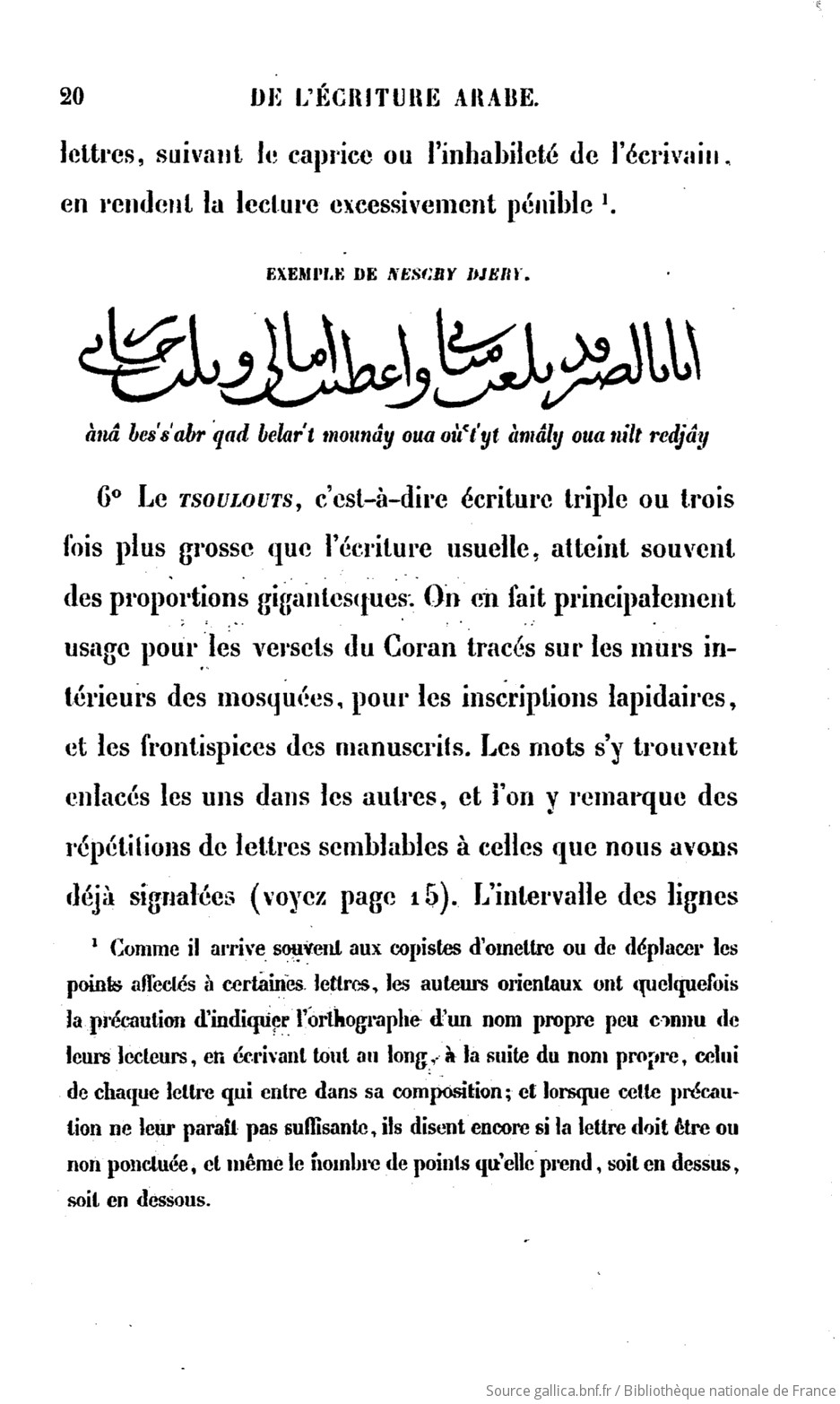Until the early 18th century, there were no printing houses for Arabic letters in the Middle East. On the other hand, as of the late 15th century, attempts were made in the West.
The Arabic alphabet appeared for the first time in a book printed using Gutenberg’s technique in Peregrinato in Terram Sanctam, a work produced in Mayence in 1486 which tells of Bernhard von Breydenbach’s pilgrimage to Jerusalem. In France, an original plate with the Arabic alphabet appeared in Champfleury, a typographical treatise by Geoffroy Troy (Paris, 1529). In both cases, they were wood engravings, and not made using lead printing characters.
The first books printed in the Arabic language and alphabet were published in Italy: firstly, a book of hours in Fano, in 1514; then in Genoa where, two years later, a psalter appeared in five languages; and finally, the Quran was printed in Venice in 1537.
For propaganda purposes, the papacy set about having books printed in Arabic. In 1584, the Typographia Medicea was founded in Rome by Cardinal Ferdinand de Medicis. Directed by a highly-cultured Orientalist, Giovanni Battista Raimondi (1536-1614), this printing house had various aims. One of them was to produce propaganda meant to attract Eastern Christians towards Roman Catholicism. Another was to provide Europeans with a knowledge of the Orient and to provide good editions of Arabic versions of non-religious classical texts. The latter included the writings of Avicenna, the geographical compendium of al-Idrisi, the adaptation by Nasir al-Din al-Tusi of Euclid’s treatise on geometry and various works of Arabic grammar and syntax. At a time when printing did not exist in the Middle East, the Medicis editions were seen as being saleable articles which were also likely to draw readers closer to Rome. After the death of Raimondi in 1614, this printing house was run by the Maronites of Rome until 1636.
Other oriental printing houses developed throughout Europe: in Leyden in 1617, the Orientalist Thomas van Erpe had thirty-eight books printed in Arabic. In Paris, in 1614, Savary de Brèves founded an “oriental language printing shop” at the Collège des Lombards. This Typographia savariana, printed the Articles du traicté faict en l’année 1604 entre Henri le Grand, roy de France & de Navarre, et sultan Amat, empereur des Turcs, 1615) – a bilingual work, considered to be the first book in Turkish to be published in Europe– a Doctrina christiana (1613) and an Arabic psalter (1614), but it was closed after this politician fell into disgrace in 1618. The blocks remained unused until 1632, when Antoine Vitré, printer to the king, bought them. With the exception of a multi-lingual Bible, oriental characters were practically no longer used in France after 1645. Now become museum pieces, Savary de Brèves’s blocks were conserved at the Imprimerie Royale where their very existence was forgotten. It was necessary to await the end of the 18th century and the revival of oriental studies for these 17th-century characters to be sought out again. They were used for the scholarly works that they had been designed for. The Revolution and the Empire also made use of this typography in an attempt to diffuse their new ideals, then their political views. But it was above all the development of oriental studies in France, symbolised by the founding of the Société Asiatique, that allowed for this rediscovered 17th-century typography to be maintained, and even enriched with many new characters during the 19th century.
For technical, religious, political, economic and cultural reasons, printing with moveable characters arrived very late in the Arab-Muslim world. That said, it would seem that the ban on printing was only formal, and never confirmed by an official decree. A 1588 court order even authorised the sales and distribution on the Ottoman Empire of works printed in Europe in the Arabic alphabet, especially in Italy, while also forbidding the importation of religious texts.
In 1504, the Jews who had taken refuge in the Ottoman Empire were allowed to introduce into Istanbul, Thessalonica and other towns works printed in Hebrew characters. They were followed by the Armenians in 1567, then the Greeks in 1627. The first Arabic printing house seems to have appeared in Aleppo in 1706, then in several monasteries in Lebanon. Meanwhile, a Turkish printing house, using Arabic characters, was introduced into Istanbul in 1728. Under the direction of its founder, Ibrahim Müteferrika (1674-1745), between 1729 and 1742 it published seventeen works, for the most part dealing with history, geography and languages. After a long period of closure, it opened again in 1784, mainly publishing military and naval works translated from French.
In the first decades of the 19th century, Turkey and Egypt allotted an important place to printing, though it took time to develop. Between 1729 and 1839, only 439 titles appeared in Istanbul; at the same time, the Bulaq press in Cairo published just 243 titles between 1822 and 1842, with a large majority of translations. However, the movement had now been launched and, above all thanks to the shift to lithography which allowed for a faithful reproduction of a text and of the forms of Arabic calligraphy, both state and private printing houses continued to spread in the Middle East. Meanwhile, newspapers experienced a spectacular development (see the Press article).
In 2002, the Bibliothèque nationale de France organised an exhibition of the art of Arabic books, and its virtual version is still accessible. In particular, it features a chapter on printing with Arabic characters, among other richly illustrated sections on the use of materials, scripts, decorations, illustrations and bindings.



